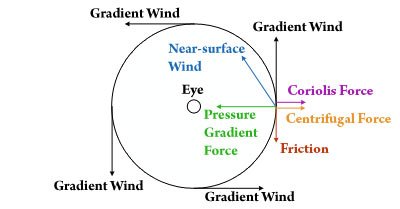Adventageous
Member
Modern 'preterism' (as well as 'futurism', 'amillennialism', 'mysticism/allegorism', and 'hyper literalism') is/are Jesuit counter-Reformation theology.I apologize for derailing my OWN thread; so 'preterism' is not reformed?
QUESTION: SINCE THE “HISTORICIST” UNDERSTANDING (GOD DECLARES THE END FROM THE BEGINNING) IS THE TRUTH, WHERE DID THE MODERN STANDARD “PRETERIST” & “FUTURIST” & “AMILLENNIALIST” & “ALLEGORIST” INTERPRETATIONS OF PROPHECY COME FROM?
The modern standard formulations of the “preterist”, “futurist”, “amillennialist”, and “allegorist” interpretations of Prophecy came from the Jesuits (though there are older non-standardized versions through history by various persons): - https://web.archive.org/web/20170703142610/http://www.aloha.net/~mikesch/antichrist.htm
[A.] Preterism - Spanish Jesuit Luis De Alcazar (1554-1613), who also wrote a commentary called Investigation of the Hidden Sense of the Apocalypse, which ran to some 900 pages. In it he proposed that it all of Revelation applied to the era of pagan Rome and the first six centuries of Christianity. According to Alcazar (or Alcasar) [1.] Revelation chapters 1-11 describes the rejection of the Jews and the destruction of Jerusalem by the Romans. [2.] Revelation chapters 12 - 19 were the overthrow of Roman paganism (the great harlot) and the conversion of the empire to the church. [3.] Revelation 20 describe the final persecutions by Antichrist, who is identified as Caesar Nero (54-68 A.D.), and judgment. [4]. Revelation 21 -22 describe the triumph of the New Jerusalem, the Roman Catholic Church. Alcazar found no application of prophecy to the middle ages or to the papacy. It differed in complete opposition to the Jesuit Francisco Ribera’s and Robert Bellarmine’s Futurism theology.
[B.] Futurism - Francisco Ribera (1537-1591) was a Jesuit doctor of theology, born in Spain, who began writing a lengthy commentary in 1585 on the book of Revelation (Apocalypse) titled In Sacrum Beati Ioannis Apostoli, & Evangelistiae Apocalypsin Commentarij, and published it about the year 1590. He died in 1591 at the age of fifty-four, so he was not able to expand on his work or write any other commentaries on Revelation. In order to remove the Catholic Church from consideration as the antichrist power, Ribera proposed that the first few chapters of the Apocalypse applied to ancient pagan Rome, and the rest he limited to a yet future period of 3 1/2 literal years, immediately prior to the second coming. During that time, the Roman Catholic Church would have fallen away from the pope into apostasy. Then, he proposed, the antichrist, a single individual, would: [1.] Persecute and blaspheme the saints of God. [2.] Rebuild the temple in Jerusalem. [3.] Abolish the Christian religion. [4.] Deny Jesus Christ. [5.] Be received by the Jews. [6.] Pretend to be God. [7.] Kill the two witnesses of God. [8.] Conquer the world.
[C.] Futurism - Cardinal Robert Bellarmine (S.J. – Jesuit), one of the best known Jesuit apologists, published a work between 1581 and 1593 entitled Disputationum Roberti Bellarmini De controversiis Christian fidei adversus hujus temporis haereticos, (Polemic Lectures Concerning the Disputed Points of the Christian Belief Against the Heretics of This Time), in which he also denied the day = year principle in prophecy and pushed the reign of antichrist into a future period of 3 1/2 literal years. (See Froom, Prophetic Faith, Vol. 2, pgs. 495 - 502).
[D.] Futurism - Michael Walpole - A Treatise of Antichrist. Conteyning the defence of Cardinall Bellarmines arguments, which inuincibly demonstrate, that the pope is not Antichrist. Against George Downam by Michael Christopherson priest ..., Volume 1 of 2 by the English Jesuit, Michael Walpole (1570-1624?), 1613 edition. Christopherson is a pseudonym for Walpole.
[E.] Futurism - Manuel De Lacunza (1731–1801), a Jesuit from Chile, wrote a manuscript in Spanish titled La Venida del Mesias en Gloria y Magestad ("The Coming of the Messiah in Glory and Majesty"), under the pen name of Juan Josafa [Rabbi] Ben-Ezra about 1791. Lacunza wrote under an assumed Jewish name to obscure the fact that he was a Catholic, in order to give his book better acceptance in Protestantism, his intended audience. Also an advocate of Futurism, Lacunza was deliberately attempting to take the pressure off the papacy by proposing that the Antichrist was still off in the future. His manuscript was published in London, Spain, Mexico and Paris between 1811 and 1826.
[F.] Futurism - Edward Irving (1792-1834), a Scottish Presbyterian and forerunner of the Pentecostal and Charismatic movements, translated Lacunza's work from Spanish into English in a book titled The Coming of Messiah in Glory and Majesty with a Preliminary Discourse, published in London in 1827 by L.B. Seeley & Sons, which included Irving's own lengthy preface.
[G.] Futurism – Margaret McDonald, member of Edward Irving’s congregation has visions in early 1830’s, with a ‘secret rapture’ of believers before Antichrist appears.
[H.] Futurism - Samuel Roffey Maitland (1792-1866), scholar and librarian to the Archbishop of Canterbury, further promoted and established Futurism in England after 1826, as a result of reading the work of Manuel De Lacunza.
[I.] Futurism - John Nelson Darby (1800–1882), a Church of Ireland clergyman, later with the Plymouth Brethren, also promoted Futurism and a secret rapture. Darby attended the series of meetings on Bible Prophecy that began in 1830 at Powerscourt, Ireland, and at these conferences Darby apparently learned about the secret rapture as revealed by vision to Margaret McDonald, and promoted by Edward Irving, and he soon visited Margaret MacDonald at her home in Port Glasgow, Scotland. Darby later visited America several times between 1859 and 1874, where his Futurist theology was readily accepted.
[J.] Futurism - Samuel Prideaux Tregelles (1813-1875), formerly with the Plymouth Brethren, he became Presbyterian, and published The Hope Of Christ's Second Coming in 1864, in which he gave the following testimony on the origin of the secret rapture, "I am not aware that there was any definite teaching that there would be a secret rapture of the Church at a secret coming, until this was given forth as an "utterance" in Mr. Irving’s Church, from what was there received as being the voice of the Spirit. But whether any one ever asserted such a thing or not, it was from that supposed revelation that the modern doctrine and the modern phraseology respecting it arose. It came not from Holy Scripture, but from that which falsely pretended to be the Spirit of God, while not owning the true doctrine of our Lord’s incarnation in the same flesh and blood as His brethren, but without taint of sin." -- Footnote 1 for Chapter 9, pg 35.
[K.] Cyrus Ingerson Scofield (1843-1921), greatly influenced by the writings of J. N. Darby, incorporated Futurism in the notes of his Scofield Reference Bible. First published by Oxford University Press in 1909, one million copies were printed by 1930. The Scofield Bible was instrumental in firmly establishing the Jesuit inspired Futurist interpretation in the Protestant Bible schools of the United States in the 20th century. [1.] Futurist - Dallas Theological Seminary (John Walvoord, Chuck Swindoll, Charles C. Ryrie, Hal Lindsey, J. Vernon McGee, Kenneth N. Taylor, Thomas Ice, Renald Showers), [2.] Moody Bible Institute of Chicago (Jerry B. Jenkins), [3.] Western Theological Seminary (Reformed Church in America; Tim LaHaye; Jerry Fallwell), and others like Trinity Broadcasting, Jack Van Impe Ministries, Zola Levitt Ministries, John Ankerberg, Perry Stone, Chuck Missler, Dave Hunt, Eric Jon Phelps, etc.




